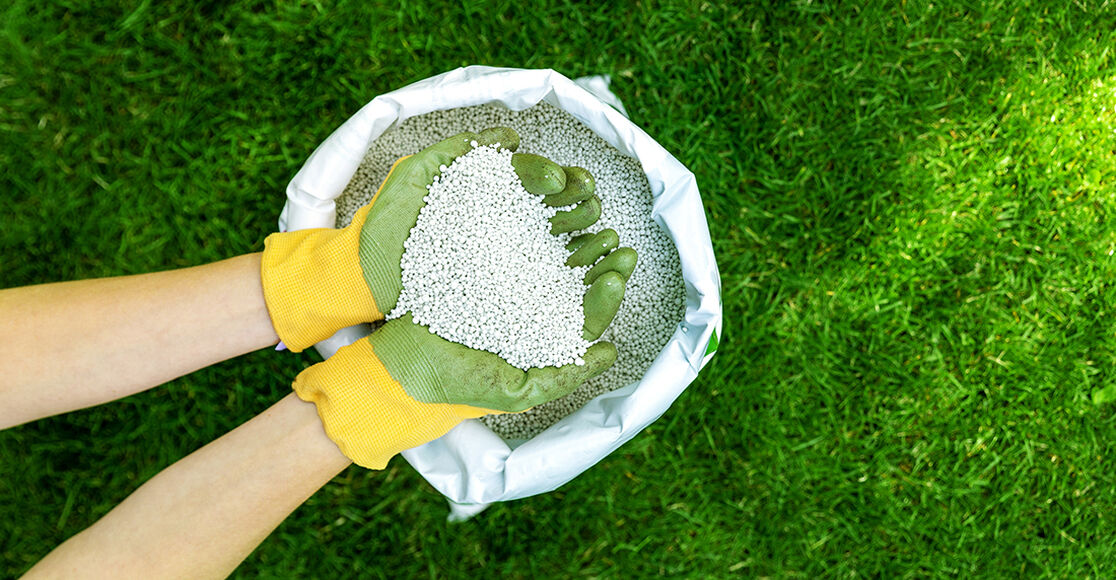Fall is a great – if not the best – time of year to fertilize your lawn. Fall lawn treatment options that boost the nutrients in the lawn just prior to its dormant season can help it stay healthy and come back more quickly in the spring. Explore these fall lawn fertilizer tips to get a head start on the perfect lawn.
How to Apply the Proper Amount of Fertilizer
When it comes to fertilizing the lawn, Eric Rochow of GardenFork recommends keeping it simple. And that means measuring your lawn, understanding your fertilizer, and applying it at the correct rate. Rochow shared insights on how to fertilize lawns in a recent Ask Troy Live event.
Rochow says the best approach to fall fertilizer application begins by measuring your yard, since most fertilizer formulas are designed to be applied based on the square footage of your lawn. Understanding how much grass you have, in square feet, dictates the amount of fertilizer nutrients you should apply. Once you have this measurement, it’s easier to figure out the type and quantity of fertilizer your lawn needs, then how to apply it for best results.
What’s the Best Fertilizer for Fall Lawn Care?
When determining how much fertilizer you need, you’ll want to understand the nitrogen content of the fertilizer you’re using, as different types of fertilizers differ. The three numbers printed at the top of the fertilizer bag are important, as they indicate the percentage by weight of three key nutrients: nitrogen, phosphorous and potassium. The first number of the three typically represents the fertilizer’s nitrogen content and is a good indication of the strength of the fertilizer.
As a general rule of thumb, Rochow recommends applying 1 pound of nitrogen (not fertilizer) per 1,000 square feet of grass per application. Read the back of the bag to understand how much fertilizer nets 1 pound of nitrogen. He suggests using this measurement as a baseline for at least two applications (spring and late summer), then assessing whether you should readjust the amount of nitrogen applied during later applications. Some grasses, such as those in warmer climates, need a bit more nitrogen than others, while other types may need less.
Consider Using a Slow-Release Formula for Fall Lawn Care
Besides figuring out the amount of fertilizer nutrients needed for your lawn, you also want to figure out how it will break down once applied. For fall and spring lawn care applications, Rochow advises using a time-release or pelletized formula, rather than an all-purpose formula that will be absorbed by the lawn all at once. Fall lawn fertilization is all about promoting root growth – not necessarily grass growth – as this can help the roots grow more deeply so your lawn becomes more resilient.
Choosing a fall lawn fertilizer that will break down slowly over time can prevent fertilizer burn to the grass, caused by applying too much nitrogen at once. Overfertilizing also causes nutrient buildup in the soil, which makes it hard for grass to absorb water and may lead to nitrogen runoff.
Be sure to read and follow the application instructions specific to your fertilizer, as that determines how to achieve the recommended rate of 1 pound of nitrogen per 1,000 square feet of grass. In most cases, you’ll want to use a spreader to achieve an even application. Along with that technique, Rochow suggests calibrating the spreader based on your fertilizer, using the instruction manual specific to your equipment. This tactic also helps ensure you’re applying the right quantity of fertilizer based on its nutrient content. Knowing how to properly treat your lawn in the fall can make a lasting impact on the long-term health of your grass.
When to Fertilize Lawn in the Fall
Fertilizing at the right time is also very important. You don’t want to fertilize grass when it’s dry, dormant and brown, for example, under the mistaken belief that fertilizer will bring your lawn back to life. On the contrary, applying fertilizer to dormant grass is a major cause of fertilizer burn and lawn damage.
If you’re in the midst of a dry period or a draught, then it’s best to wait until some moisture has returned before applying fertilizer. At this point, the fertilizer will be more likely to reach its intended target: the grass roots.
Mulch When Mowing
Many often wonder how to best take care of their grass in the fall. An easy step you can take to improve the health of your grass is to use a mulching mower and allow the cut grass to remain on the lawn where it can break down naturally. As the grass degrades, it will naturally and slowly add nitrogen to the soil, resulting in the most natural way to care for your lawn.
Follow these fall lawn fertilizer tips and you may find that your fertilization efforts are more productive, more efficient and more rewarding, resulting in a lush, healthy lawn.
